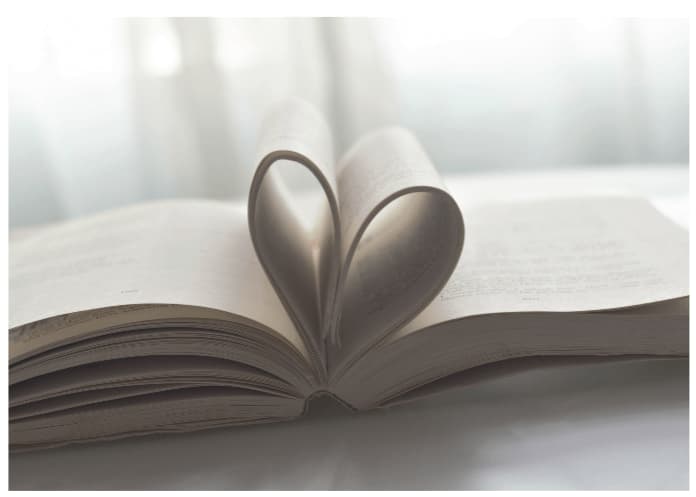If we are talking about the avant-garde of English-language literature, very soon we are directed to Walt Whitman, born May 31, 1819, in West Hills, Long Island, New York, the son of Walter Whitman y Louise Van Welsor, who had nine children.
The childhood of the residents of the Whitman van Welsor home It was not an easy one, for due to financial difficulties Walt and his brothers had to drop out of school to maintain a home, which soon led him to seek work and find it as an assistant printer, laying the foundation from age twelve for his love of letters.
Mostly self-taught, by 1835 Walt Whitman was avidly reading the works of Shakespeare, Homer, Dante y The Bible while learning the profession of lyricist. After a great fire in New York City that destroyed the printing industry a year later, Walt left these offices to teach in the New York City public schools. Brooklyn y Long Island until 1839, when he finally turned to journalism as a full-time career.
Thus he founded a weekly newspaper, the Islander, and later edited several Brooklyn y New York newspapers including the Brooklyn Daily Eagle, from there he became editor of the New Orleans Crescent for three months. After seeing the slave auctions in New Orleans, Return to Brooklyn in the fall of 1848 and co-founded another newspaper, the Brooklyn Freeman, which he edited until the following fall.
These years spent in editorials opened the door for him to meet his writing contemporaries, including his idol. Ralph Waldo Emerson and illustrator Andrew Rome, with whom he would collaborate to create an image of his first work.
Consecration of Walt Whitman and his Weed
As early as 1855, with the aforementioned friendship, Walt published the first edition of the book. Leaves of Grass, consisting of twelve poems with no title or preface. A year later Whitman published a second edition of the book, which contained thirty-two poems, a letter from Emerson praising the first edition, and a long open letter from himself. Whitman continued to refine the volume of his Leaves of Grass in the following years, publishing several more editions of the book, a world-renowned test of the moral, psychological, and political constraints of English-language poetry and literature.
From this work come three of Walt Whitman’s major poems, ‘I Sing the Electric Body,’ ‘Sleepers’ AND ‘Song of Myself,’ which were combined in the first edition of Leaves of Grass.
Like many of his generation and some other writing and art professionals, Walt witnessed military conflicts, particularly the Civil War in 1861, so he vowed to live life clean as a freelance journalist and chronicler of the wounded in New York City hospitals. He then went to Washington, D.C. in December 1862 to care for one of his brothers who had also been wounded in the war.
This experience brings a sensitivity and compassion that complements his poetic work as he sees himself overwhelmed by the suffering of the wounded, polishes his pen, and further makes his way as one of America’s most important lyricists.
For a little over a decade Whitman stayed and worked in hospitals, taking a job at a hospital. The Office of Indian Affairs that he would later lose because his boss did not look favorably on Leaves of Grass, his years work.
In 1873, after leaving the care of the wounded, Walt Whitman suffered a stroke that left him partially paralyzed, and realizing that his life was nearing its end, he traveled to Camden, New Jersey, to visit his dying mother in the home of one of his brothers. There he remained in the company of his family and published the last issue of the book. Leaves of Grass in 1882, along with several other poems and prose such as Farewell, My Fantasy, providing him with enough funds to build the house in which he died on March 26, 1892. He was buried in a grave he designed in a plot in Harley Cemetery.
In Leaves of Grass, Whitman holds an important position in English-language literature and, more importantly, is at the forefront of world literature, influencing later styles such as Futurism, Creationism, Imaginism y Ultraism, as well as some of the most famous names in poetry, such as: Reuben Dario, José Martí, Cherie Martinelli, Federico García Lorca, Pablo Neruda, Guillaume Apollinaire, y Allen Ginsberg, who was one of the most prominent figures of the Beat Generation in the 1950 decade.
His struggles with the guild
Unlike many of his other colleagues who did not struggle to gain the recognition they deserved, Walt had no support that could give him any more decline, even in other parts of the world he never reached.
For example, Henry James y William Dean HowellsRepresentatives of the young creative generation of 1865 believed that Whitman’s reputation was undeserved because he was not a writer with a sensitivity to language, with a musical or verbal ear.
Gerald Manley HopkinsOn the other hand, he acknowledged his literary contributions, but objected that Walt Whitman’s “wild” style lacked rigor. George Santayana He said he did not read him because of his verbal grace, which Shakespeare did not excel at, but he had his own merit: his message, born of inspiration and delivered through the shouting voice of nature in the wilderness of convention.
The Idaho poet, Ezra Pound, considers him his “spiritual father” and recognizes in him a poet who in North America takes the place of Dante in Italy, thus justifying his inevitable influence.
Yet despite the controversy he may or may not face because of his wicked, assertive, discursive and prophetic style, or the fact that doubts arise as to whether his ideas of equality, freedom and solidarity are only one of his poetic resources, Walt Whitman stands alongside Emily Dickinson, Henry Wadsworth Longfellow, Edgar Allan Poe y Henry David Thoreau as the most influential poets in the United States, because although Whitman, the man, does not take Whitman’s place as a poet, it is important to save the importance of his work for modern literature.



